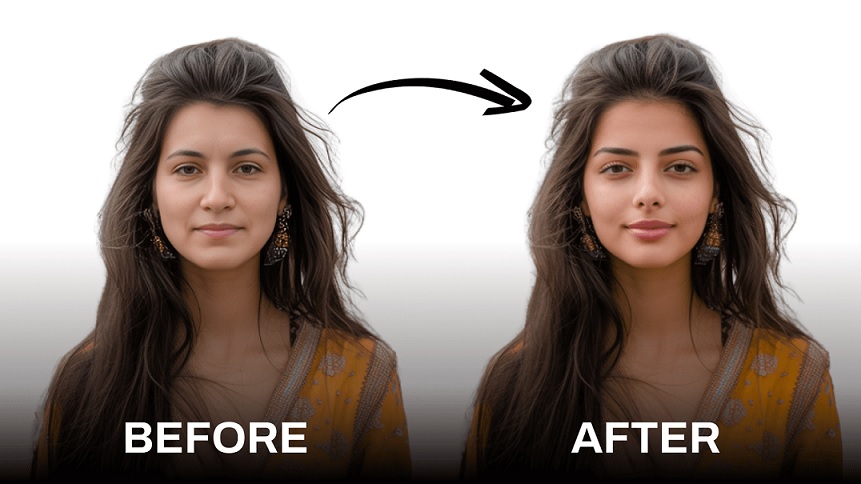Face swap technology, which allows users to replace their facial features with those of friends, celebrities, and even fictitious individuals, has become popular across the web in recent years. What started off as a playful internet novelty has developed into a potent AI-powered tool for marketing, entertainment, and even online communication. AI is changing the boundaries of digital development, from swapping one picture to creating movies that feature numerous face swaps.
What is Face Swap?
Face swap is the process of digitally exchanging a person’s face with another face using software. Originally, this was done with basic image editing tools and required time and skill. Today, AI has made it easier and more realistic than ever. With just a few taps on a smartphone, anyone can replace their face with someone else’s in a picture or video, and the results are often shockingly accurate.
This technology uses deep learning models, particularly deepfake and generative adversarial networks (GANs), to analyze facial features, mimic expressions, and blend one face seamlessly onto another. The result is not just a copy-paste look, but a dynamic and expressive transformation that responds to movement, lighting, and angles.
The Rise of AI Face Swap
The introduction of AI face swap has taken things to the next level. By training algorithms on massive datasets of facial expressions and structures, AI can now recreate highly realistic and interactive face swaps. Unlike earlier tools that looked cartoonish or artificial, today’s AI-based applications offer stunning realism.
Apps like Reface, FaceMagic, and iSmartta are popular examples that let users swap their faces into famous movie clips, music videos, or viral memes. These tools don’t just cut and paste a face—they analyze eye movement, lip sync, and even emotions. As a result, the final product feels like the swapped face was actually part of the original video.
What makes AI face swap truly unique is its potential for creativity and storytelling. Content creators, marketers, and even educators are now using this technology to add humor, depth, or personalization to their work.
Multiple Face Swap Video: The New Frontier
While face swapping one person in a video is impressive, imagine the ability to swap multiple faces in a single video. This is the newest trend gaining traction among AI developers and video creators.
Multiple face swap video technology allows users to swap several faces at once—such as an entire group photo or a cast of characters in a movie scene. With AI, each face is treated individually, maintaining unique facial expressions, voice sync, and character traits. This feature is particularly popular among friend groups or families who want to insert themselves into their favorite film scenes or viral videos.
Brands are also catching on. Marketing agencies are using multiple face swaps to create dynamic ad campaigns where the audience can see themselves and their friends starring in the content. This form of interactive media has proven to boost engagement and drive viral sharing.
Ethical Concerns and Responsibility
As with any powerful technology, AI face swap raises ethical concerns. The realism and ease of use can lead to misuse—such as creating misleading content or impersonating others. This is especially serious when used in fake news, revenge content, or political propaganda.
To combat this, many platforms are implementing watermarking systems or AI detection tools to identify manipulated videos. Additionally, responsible app developers are including usage policies, disclaimers, and safeguards that prevent misuse.
As users, it’s important to understand the limits and responsibilities that come with this technology. While face swapping can be fun and entertaining, respecting privacy, consent, and authenticity is crucial.
The Future of Face Swap
Looking ahead, AI face swap is only going to become more advanced and accessible. We can expect even more accurate real-time swapping, 3D face modeling, and integration with AR/VR environments. Imagine attending a virtual meeting as your favorite superhero or creating a short film where every character is played by you and your friends—this is quickly becoming a reality.
There are also practical applications on the horizon. Healthcare, for instance, can use face swap technology in reconstructive surgery simulations. Education can use face swapping for interactive history lessons where students “become” historical figures. Even customer service may see AI avatars with customizable faces, making the digital experience more human.
Conclusion
Face switch, AI face swap, and multiple face swap video tools are transforming online interaction spanning online amusement to high-end video creation. Great innovation comes with great responsibility, and it is the duty of both creators and consumers to adopt the technology in an ethical manner.
The potential for connection, entertainment, or creativity will all increase as AI advances more. With a digital grin face swapping tools may assist you accomplish your objectives of sharing laughter with friends or starring in a song you love.



